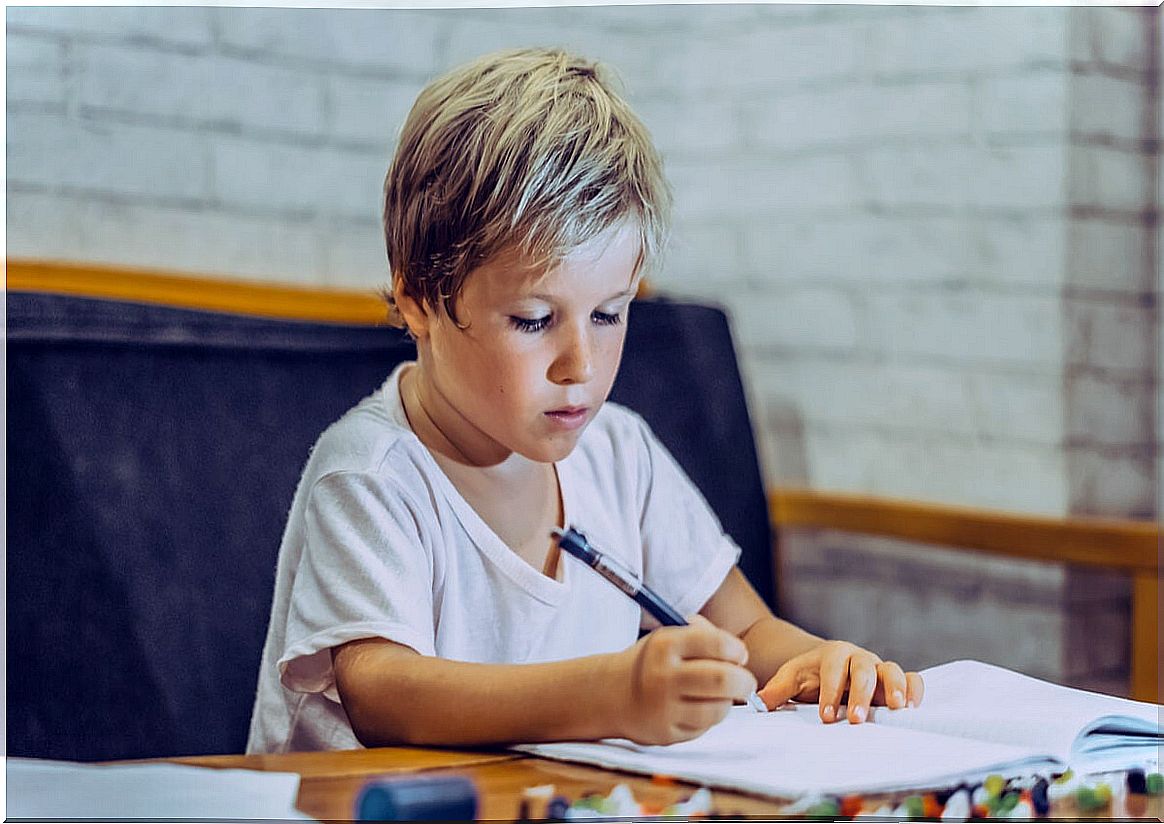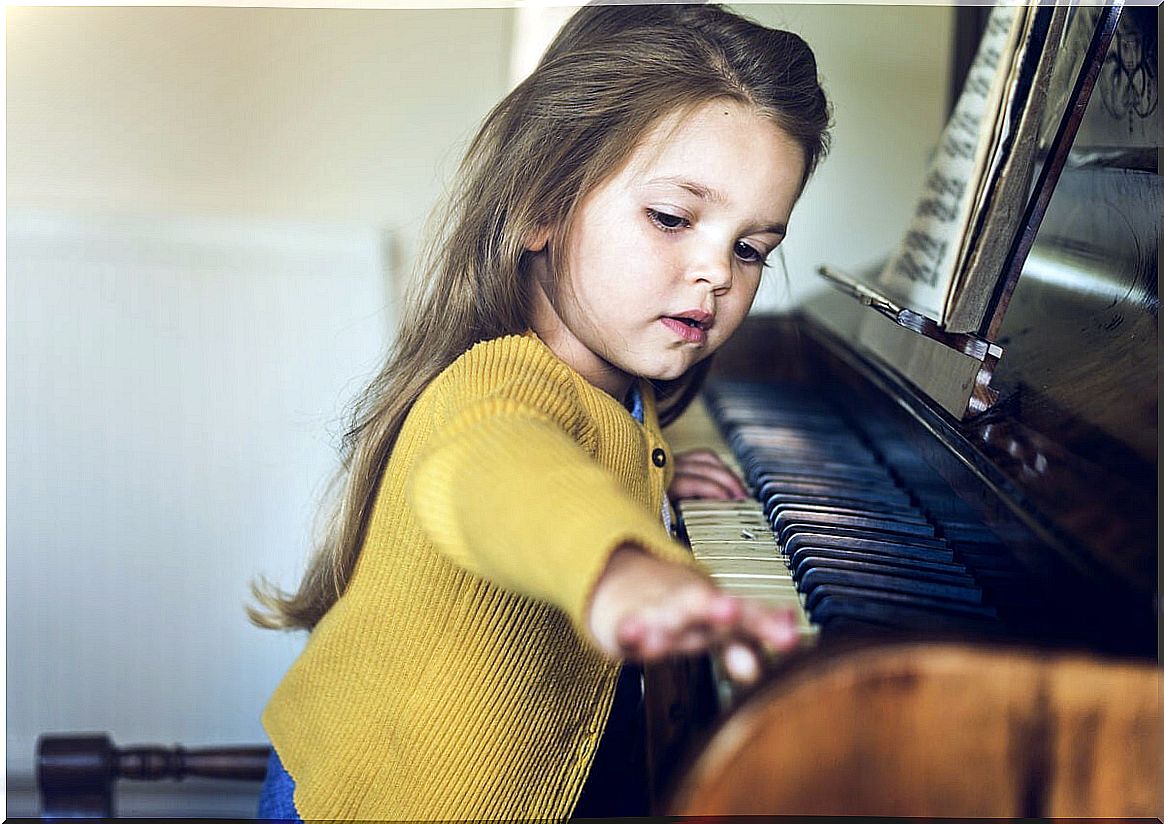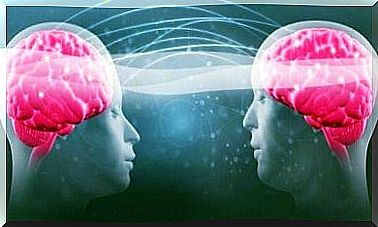ADHD And High Abilities, The Double Exceptionality: What Does It Consist Of?

ADHD and high capacities can go perfectly hand in hand, escaping school identification. So much so that it is very common to reach adulthood without having identified this fact and, what is worse, without having been able to develop and take advantage of this potential. This is a reality that is repeated day after day and that invites reflection.
Why happens? Why are there no earlier diagnoses of intellectual giftedness or giftedness? First of all, because we continue to harbor false myths. Not every brilliant student is behind exceptional grades or good behavior in class. The brightest children are sometimes more restless than usual and have a history of constant school failure.
Dr. Thomas E. Brown, a clinical psychologist at Yale University and one of the leading experts on attention disorder with and without hyperactivity, makes an interesting point. There are many people with this condition who have a high IQ, but show notable problems to display their intelligence effectively due to ADHD.
Also, there is another fact and that is that, usually, we tend to focus only on the behavior of these children without addressing their real needs. Let’s dive a little deeper into this topic.

ADHD and giftedness, how are they related?
In general, and for a few years, we usually speak of double exceptionality when a child with high abilities shows an attention deficit and hyperactivity disorder (ADHD). The combination of these two conditions is problematic because hyperactivity or attention problems condition that they can optimally develop their potential.
As we well know, ADHD appears with a large constellation of symptoms, among which is impulsivity, the inability to regulate behavior or to control emotions. Now, Dr. Thomas E. Brown talks about other facts as well. We can have bright children with a delay in the development of executive functions.
That is, we can identify in them an immaturity in that group of cognitive abilities that regulate various functions of the mind such as attention, reflection, analysis, etc. Thus, the greatest challenge for the child or adolescent with ADHD and high abilities is not to understand what they are being taught, it is to show that they understand it. Let’s know more data.
What are children with high abilities and ADHD like?
Studies, such as those carried out in the Department of Psychology at Nottingham Trent University, provide conclusive evidence. It is not easy to identify the child with ADHD and high abilities, what is more, in general, these students are often associated with school failure and delay. Therefore, we are facing a reality to which we must be more sensitive.
Let’s understand how this feature manifests itself.
- These children have a great gap between their potential and their executive abilities. Some can be very skilled in verbal comprehension, others in visual-spatial reasoning; however, it may be difficult for them to maintain their attention or to express their knowledge in a regular test.
- They have great competence in abstract reasoning (a process that allows us to solve problems of a logical type).
- They are children who show multiple and varied interests.
- They have good verbal fluency, very advanced for their age.
- High creativity.
- They tend to abandon many of the things they start. They are not constant.
- They don’t work well in the classroom, they get bored, they don’t attend, they don’t respond to structured tasks …
- They act before thinking, they are impulsive.
- They do not work well on team tasks.
- Great emotionality: they live in an intense and even oversized way all emotions.
- They are very empathetic children.
- They reject authority figures.
- They tend to have problems with other classmates, they show problems to integrate.

How to address the needs of children with double exceptionality?
The giftedness or high capacities that coexist with ADHD is a challenge, both in children and in adults. This double exceptionality makes, among other things, that they experience learning and their own life in a different way. For example, the child or adolescent who does not adjust to ordinary learning and fails, feels increasingly unmotivated and the relationship with his environment becomes difficult.
On the other hand, the characteristic that most defines the adult with ADHD and high capacities is emotional mismanagement, feeling overwhelmed by their feelings, feeling disoriented and frustrated in various areas of their life, both socially and at work, affects them in a high way.
What should be done in all these cases? The most important thing is to act early. We analyze it.
Strategies in the school environment
- Early detection strategies in children with special educational needs.
- Stimulating and personalized school environment for the student with ADHD and high abilities.
- Smaller ratios in classrooms.
- Curricular adjustments that adapt to their high abilities.
- Teachers trained in serving students with these characteristics, so that the child also perceives that their abilities are trusted.
- Make use of various educational tools, such as new technologies.
- Instruction in study skills, time management, problem solving, resistance to frustration.
- Emotional management techniques.
- Psychological assistance so that the student understands his personal reality.
Family strategies
Having the support, sensitivity and understanding of the family is essential for the good development of the child with ADHD and high capacities. In these cases, it is critical that they understand the following:
- Have high expectations of the child and that he perceives it.
- Promote well-structured life habits that help the child to integrate routines and habits.
- Validate the interests of the child, stimulate their motivation, help them manage their emotions.
- Constant communication with the school.
To conclude, people with this psychological reality can reach great potential as long as we understand their needs. Let’s be able to go beyond appearance, that nervous and inattentive behavior. Behind that image are minds and hearts with great needs and high capacities.









